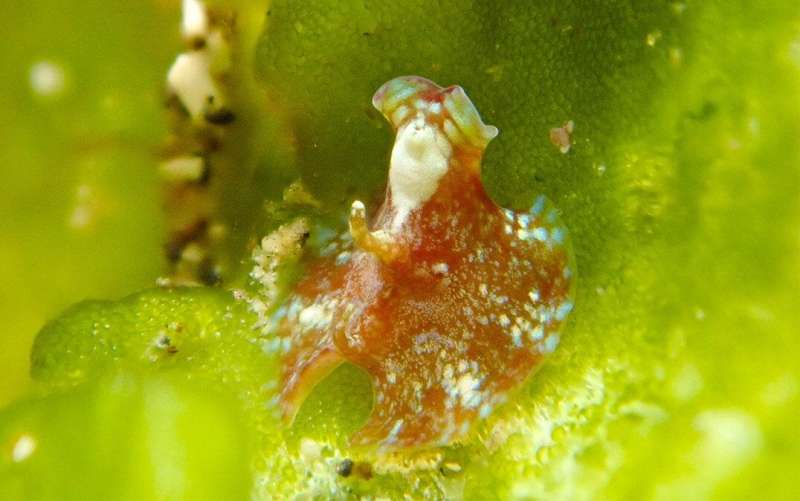Researchers from the University of Tsukuba discover a new species of marine worm in the group Acoela that swims when disturbed and has a novel dorsal appendage that appears to assist with capturing prey in a funnel formed by the worm's body. Credit: University of Tsukuba
If organisms could advertise for new species status, what would the ads look like? For the species just named by a group of Japanese researchers, the ad would probably say, "Have sensory appendage, will travel".
In a study published this month in Zoological Science, researchers from the University of Tsukuba have discovered a new species of marine worm with some characteristics that set it apart from others in its group.
The worms, from the group Acoela (whose name means "without a body cavity"), are small, simple, and aquatic. The acoels likely form an early branch of the Bilateria (bilaterally symmetrical animals—organisms whose halves are mirror images of each other when divided along a midline), and therefore are key to the debate on the origin of this group. However, despite the acoels' importance, numerous undiscovered species are estimated to exist globally.
"Certain aspects of acoel anatomy can vary widely, making it difficult to clarify the relationships within this group," explains senior author of the study, Hiroaki Nakano. "This problem that can only be addressed via systematic sampling and comprehensive analyses."
The researchers sampled along Japan's Pacific coast, discovering a new species called Amphiscolops oni, which differed notably from other species in the Xenacoelomorpha—the larger group that contains the acoels. The new worms had an appendage with sensory cilia—tiny hair-like structures—on their backs. Behavioral observations indicated that this is a sensory organ: in the presence of prey such as brine shrimp, the worms would move this appendage just before capturing the shrimp, whether or not the shrimp were touching the worms.
Furthermore, when the worms were attached to a substrate, the front part of the body was lifted, forming a funnel. Although this structure has been reported in related species, its shape and use were different in A. oni. Instead of pressing the funnel to the substrate after prey had entered through the front of it, A. oni quickly swung the funnel toward the prey, capturing it inside the funnel itself.
"We also found that when the worms were physically disturbed, they would flatten their bodies and flap their sides like a butterfly, allowing them to swim," says Nakano.
This study has demonstrated that some acoels display distinctive and remarkable behaviors, and that behavior could aid in taxonomic studies of this group. It has also revealed a dorsal appendage that represents an evolutionarily novel feature acquired by A. oni. These findings not only further the understanding of this group, but also the evolution of bilaterally symmetrical animals, which encompass all vertebrates, including us.
More information: Masashi Asai et al, A New Species of Acoela Possessing a Middorsal Appendage with a Possible Sensory Function, Zoological Science (2022). DOI: 10.2108/zs210058
Provided by University of Tsukuba
























